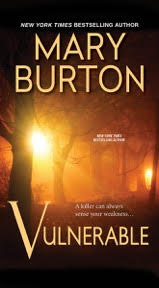
“A forensic light source is a crime scene investigator’s and lab technician’s tool for enhancing observation, photography and collection of evidence including latent fingerprints, body fluids, hair and fibers, bruises, bite marks, wound patterns, shoe and foot imprints, gun shot residues, drug traces, questioned documents, bone fragment detection, etc.” *

As noted in the description above from Horiba Scientific, the right tools—in this case proper or specialized lighting—for examining potential evidence is invaluable. That coupled with thorough and painstaking attention to detail Georgia-style can make all the difference in finding and convicting a felon. In this excerpt from VULNERABLE she uses white light while combing for evidence and black light to identify blood stains.
Pushing him from her thoughts, she focused on the white striped button-down shirt, taking extra care to tug any wrinkles on the arms or front panel. She clicked on a light suspended from a retractable arm and shone it on the material. She would go over the shirt, combing the fibers and threads for any loose materials that could be tested for DNA.
Killers always thought they were clever, but like she had said before, they all left something behind for her to find. It might be barely noticeable, but it was there.
She moved up and down the shirt, plucking several dark hairs with tweezers and then bagging and tagging them. She collected blood samples from the torn right sleeve and from the collar of the shirt. Once she reviewed every inch of the shirt a second time, she turned off the white light and grabbed a black light. Clicking it on, she scanned the shirt, searching for stains, including blood, semen, or urine. As she raised the bottom hem of the shirt, she spotted a faint stain glowing under the black light.
“Hey, now,” she muttered. “Where did you come from?” She carefully clipped away part of the fabric and dropped it in a test tube. “Thought you were so clever, didn’t you.”
“Did you say something?” Brad asked.
“Found a stain.”
He raised his head. “Good.”
Georgia scraped dirt from the bottom of Elisa’s shoe, plucked hair fibers from her skirt and documented two more stains.
She studied the shoe Elisa had worn into the woods. It was simple but expensive. Checking the label on her skirt and shirt, Georgia noted the moderately priced labels.
“The bodies in the back chamber look like a murder suicide,” Brad said.
“I’d have bought it, if not for the newest victim. No way a second killer would have found that cave. No way.”
Likely little forensic data remained on the bones, but it only took a little to connect killer to victim.
*Horiba Scientific (http://www.horiba.com/scientific/products/forensics/light-sources/forensic-light-source-applications/)
